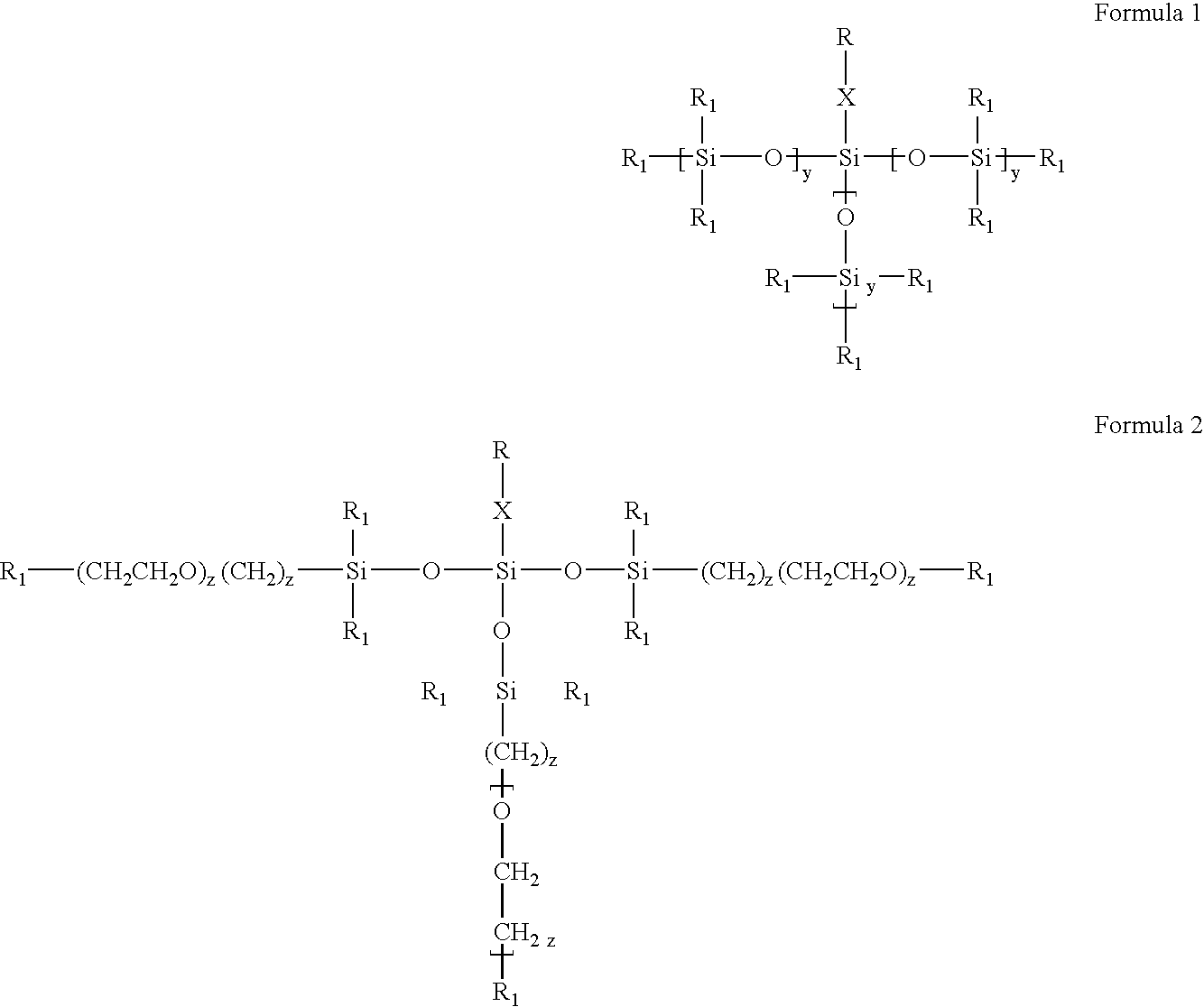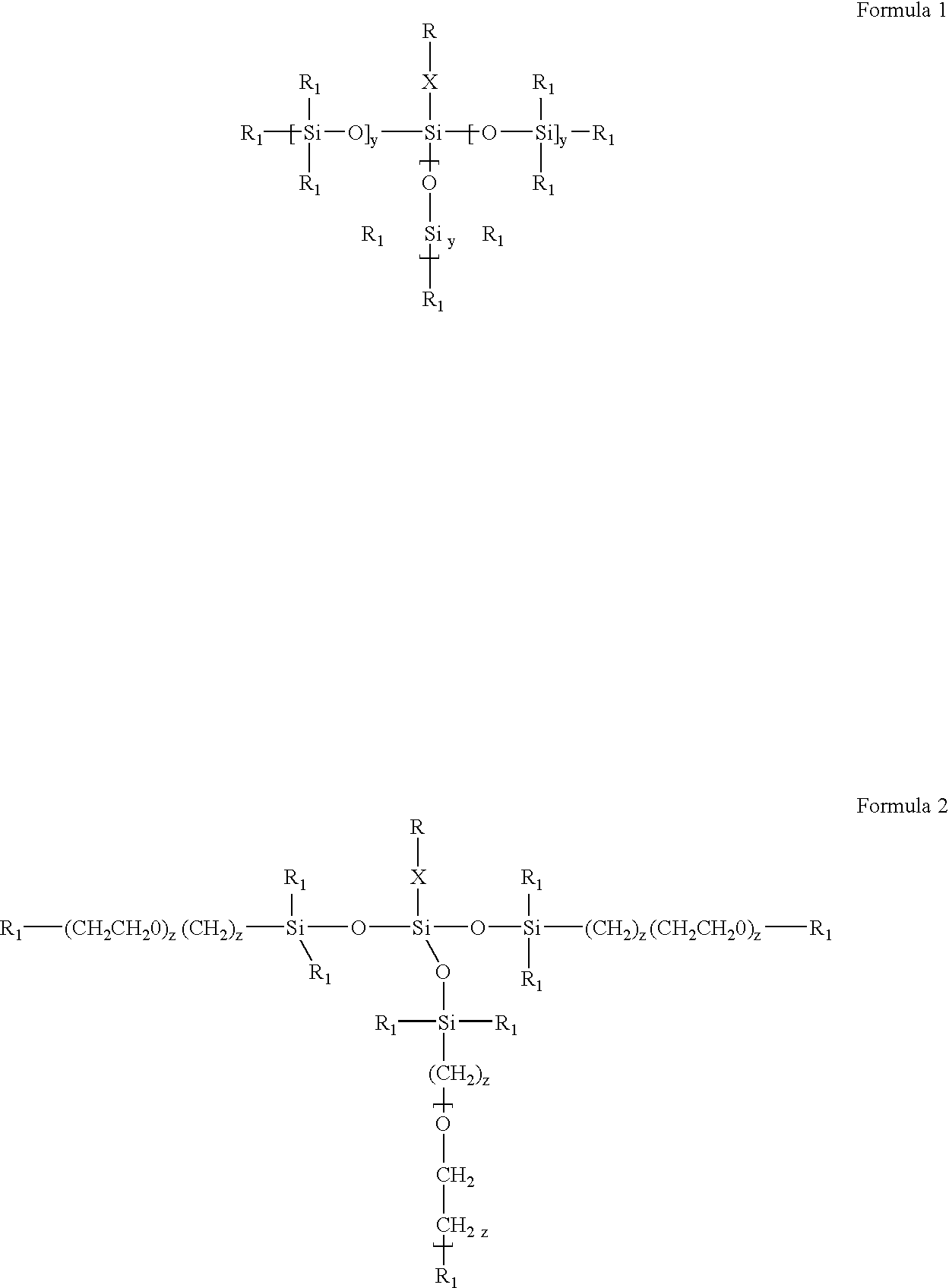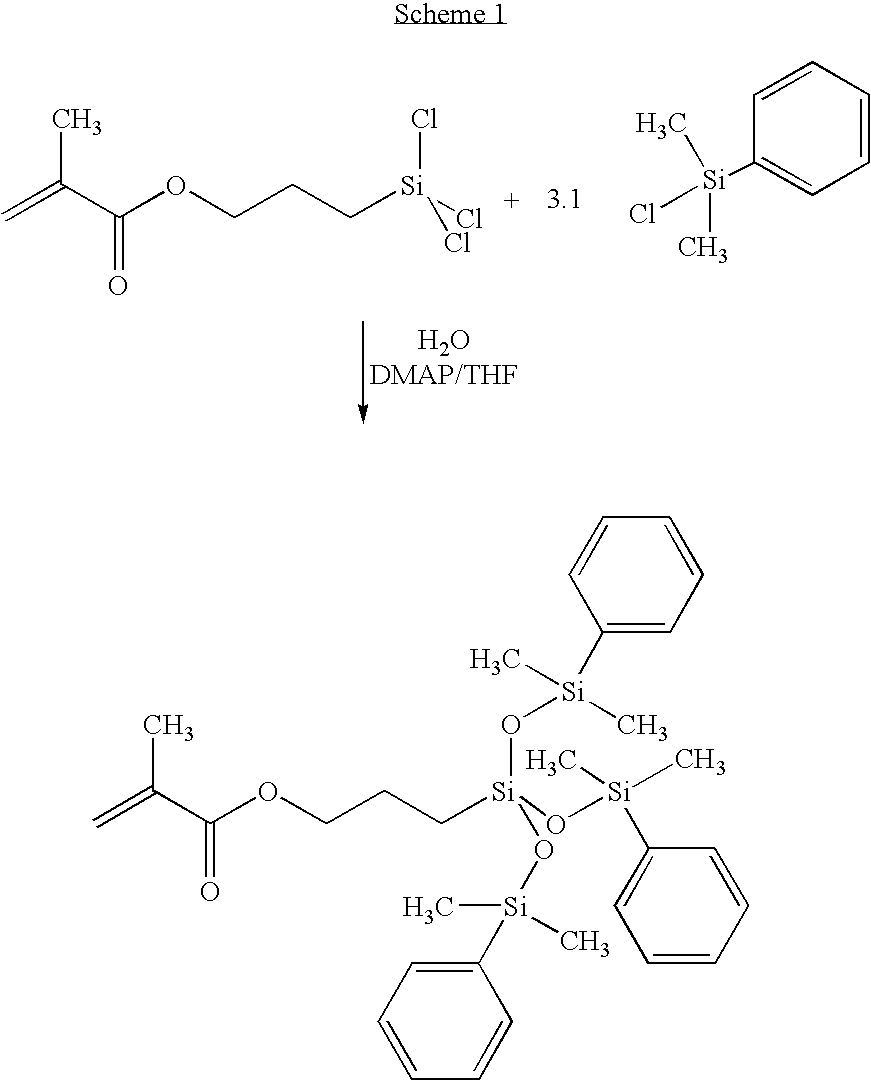High refractive index polymeric siloxysilane compositions
- Summary
- Abstract
- Description
- Claims
- Application Information
AI Technical Summary
Benefits of technology
Problems solved by technology
Method used
Image
Examples
example 1
Synthesis of MPTDS
[0035] To a 1000 ml one-neck round bottom flask fitted with a magnetic stirrer, condenser, heating mantle and nitrogen blanket, was added 500 ml CHCl3, 18.2 grams (149 mmol) of dimethylaminopyridine (DMAP), 37.6 grams (135.9 mmol) of triphenylsilanol and 30.0 grams (135.9 mmol) of 3-methacryloyloxypropyidimethylchlorosilane.
[0036] The contents of the flask were refluxed for 72 hours and then allowed to cool to room temperature. The organics were washed twice in 500 ml 2 N HCl, then dried over magnesium sulfate and flashed to an oil. After column chromatography on silica gel eluting with 80.0% heptane and 20.0% CH2Cl2, the product was isolated. The chromatography was monitored by thin layer chromatography (TLC) plates.
example 2
[0037] To 64 parts of MPTDS was added 33 parts of dimethylacrylamide, 20 parts of hexanol, 2 parts of ethyleneglycol dimethacrylate and 1.0% of Irgacure™ 819 as the UV photoinitiator and 0.25% of a commercial triazole UV blocker (Aldrich Chemical Co). The clear solution was sandwiched between two silanized glass plates using metal gaskets and exposed to UV radiation for two hours. The resultant films were released and extracted in isopropanol (IPA) for four hours, followed by air-drying and a 30 mm vacuum to remove the IPA. The resultant film was hydrated at room temperature overnight in borate buffered saline. The clear tack-free films possessed a modulus of 4333 g / mm 2, a tear strength of 112 g / mm, a water content of 23% and a refractive index of 1.51.
example 3
[0038] To 70 parts of APTDS was added 30 parts of dimethylacrylamide, 20 parts of hexanol, 1 part of ethyleneglycol dimethacrylate and 0.5% of Irgacure™ 819 as the UV photoinitiator and 0.25% of a commercial triazole UV blocker (Aldrich Chem. Co). The clear solution was sandwiched between two silanized glass plates using metal gaskets and exposed to UV radiation for two hours. The resultant films were released and extracted in IPA for four hours, followed by air-drying and a 30 mm vacuum to remove the IPA. The resultant film was hydrated at room temperature overnight in borate buffered saline. The clear tack-free films possessed a modulus of 251 g / mm2, a tear strength of 64 g / mm, a water content of 17% and a refractive index of 1.52.
PUM
 Login to View More
Login to View More Abstract
Description
Claims
Application Information
 Login to View More
Login to View More - R&D
- Intellectual Property
- Life Sciences
- Materials
- Tech Scout
- Unparalleled Data Quality
- Higher Quality Content
- 60% Fewer Hallucinations
Browse by: Latest US Patents, China's latest patents, Technical Efficacy Thesaurus, Application Domain, Technology Topic, Popular Technical Reports.
© 2025 PatSnap. All rights reserved.Legal|Privacy policy|Modern Slavery Act Transparency Statement|Sitemap|About US| Contact US: help@patsnap.com



